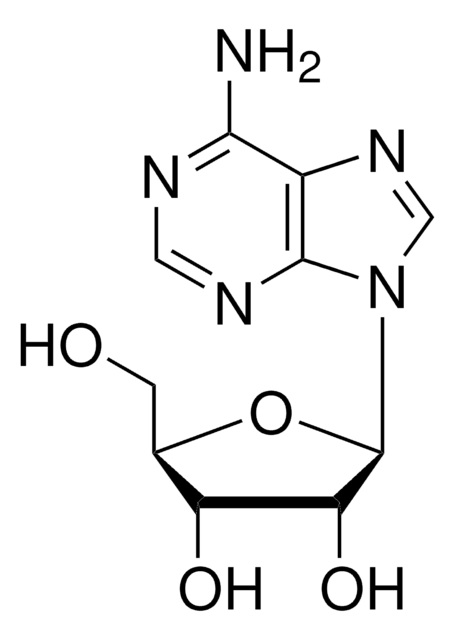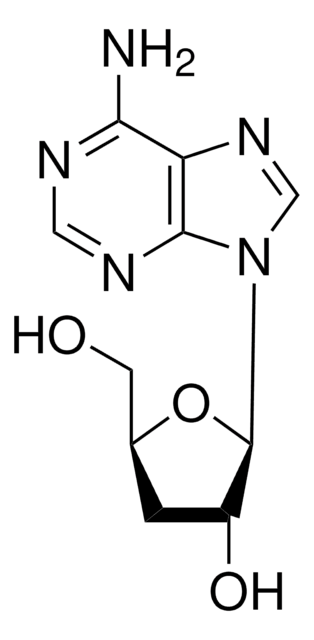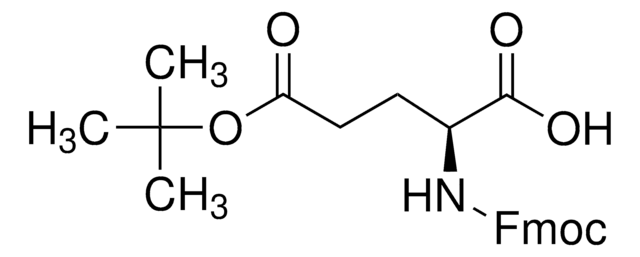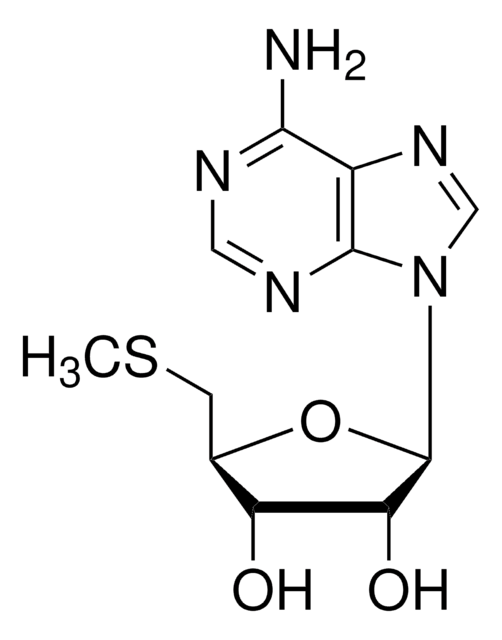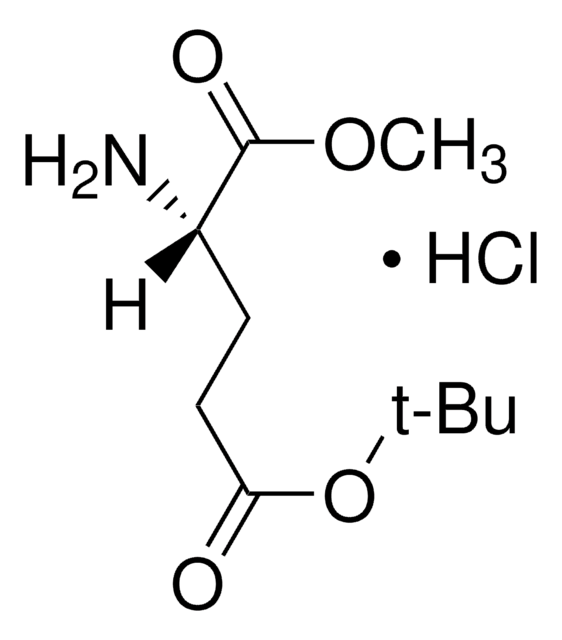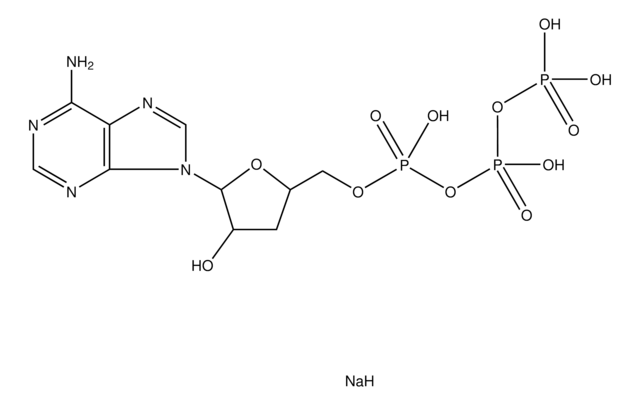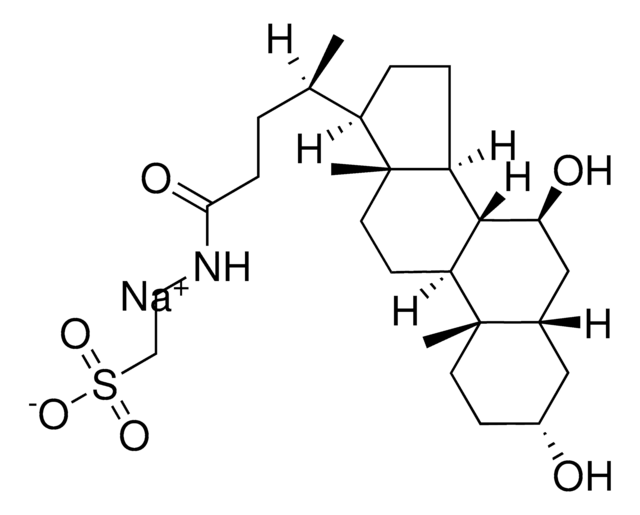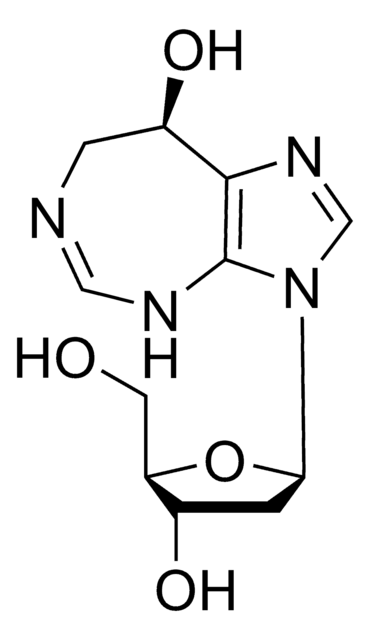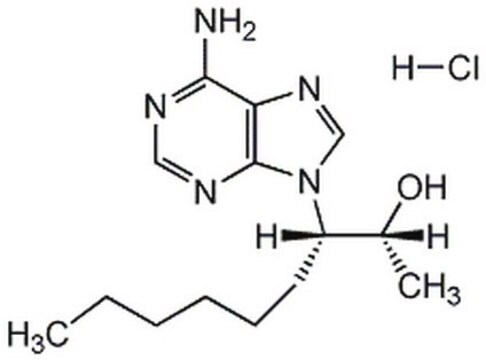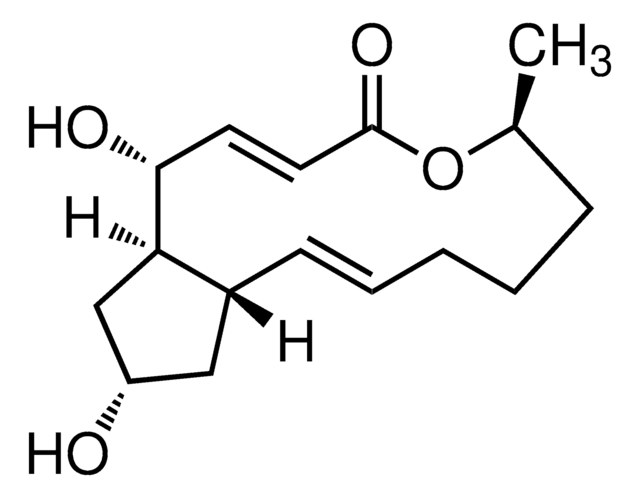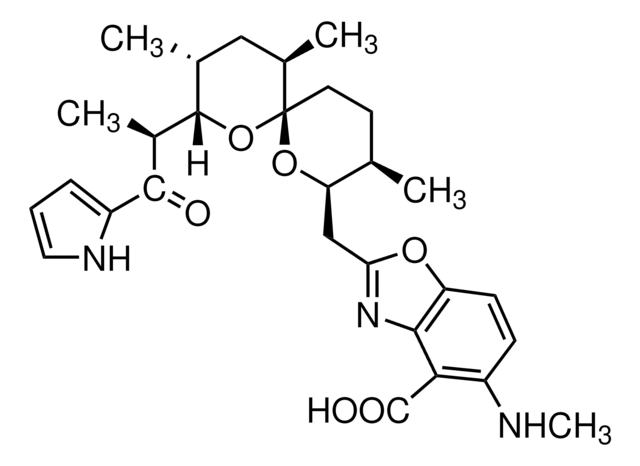Kluczowe dokumenty
C3394
Cordycepin
from Cordyceps militaris, ≥98% (HPLC), powder, adenosine analogue
Synonim(y):
3′-Deoxyadenosine
About This Item
Polecane produkty
Nazwa produktu
Cordycepin, from Cordyceps militaris
pochodzenie biologiczne
Cordyceps militaris
Poziom jakości
Formularz
powder
spektrum działania antybiotyku
fungi
Tryb działania
DNA synthesis | interferes
enzyme | inhibits
temp. przechowywania
−20°C
ciąg SMILES
Nc1ncnc2n(cnc12)[C@@H]3O[C@H](CO)C[C@H]3O
InChI
1S/C10H13N5O3/c11-8-7-9(13-3-12-8)15(4-14-7)10-6(17)1-5(2-16)18-10/h3-6,10,16-17H,1-2H2,(H2,11,12,13)/t5-,6+,10+/m0/s1
Klucz InChI
OFEZSBMBBKLLBJ-BAJZRUMYSA-N
informacje o genach
rat ... Adora1(29290)
Szukasz podobnych produktów? Odwiedź Przewodnik dotyczący porównywania produktów
Opis ogólny
Działania biochem./fizjol.
Cechy i korzyści
Hasło ostrzegawcze
Danger
Zwroty wskazujące rodzaj zagrożenia
Zwroty wskazujące środki ostrożności
Klasyfikacja zagrożeń
Acute Tox. 3 Dermal - Acute Tox. 3 Inhalation - Acute Tox. 3 Oral
Kod klasy składowania
6.1C - Combustible acute toxic Cat.3 / toxic compounds or compounds which causing chronic effects
Klasa zagrożenia wodnego (WGK)
WGK 3
Temperatura zapłonu (°F)
Not applicable
Temperatura zapłonu (°C)
Not applicable
Środki ochrony indywidualnej
Eyeshields, Faceshields, Gloves, type P2 (EN 143) respirator cartridges
Wybierz jedną z najnowszych wersji:
Masz już ten produkt?
Dokumenty związane z niedawno zakupionymi produktami zostały zamieszczone w Bibliotece dokumentów.
Klienci oglądali również te produkty
Nasz zespół naukowców ma doświadczenie we wszystkich obszarach badań, w tym w naukach przyrodniczych, materiałoznawstwie, syntezie chemicznej, chromatografii, analityce i wielu innych dziedzinach.
Skontaktuj się z zespołem ds. pomocy technicznej